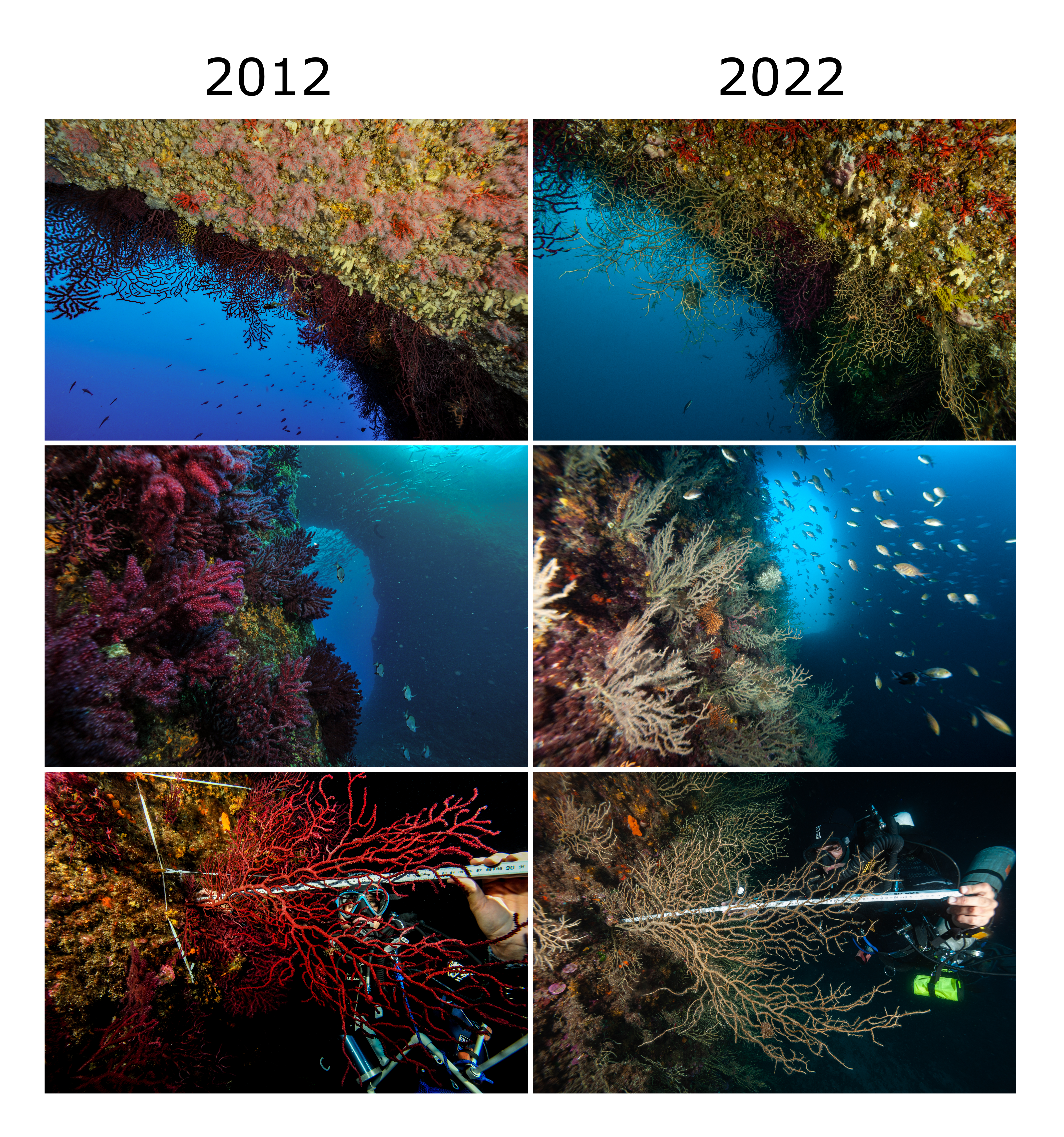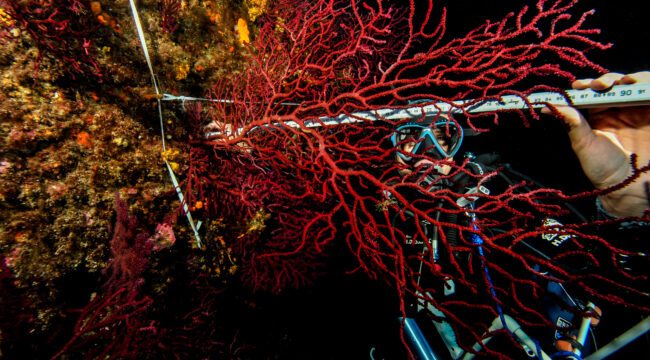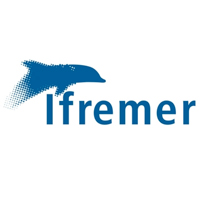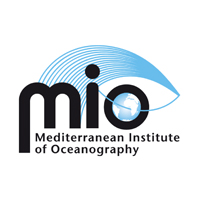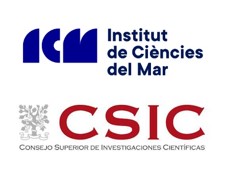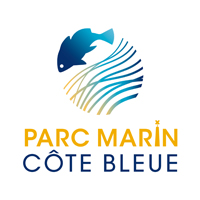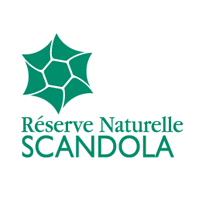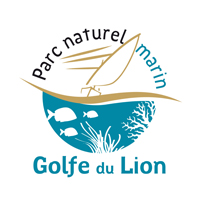1. Permanent monitoring
Since 2007, we have been involved in the monitoring of permanent transects installed in the early 2000s by teams of researchers who were pioneers in gorgonian population monitoring. These permanent transects, installed in several Marine Protected Areas, enable precise monitoring of red gorgonian (Paramuricea clavata) and yellow gorgonian (Eunicella cavolini) populations. Each colony is identified, and it is then possible to monitor its growth and the evolution of necrosis between the different monitoring periods. This monitoring also makes it possible to track the recruitment or death of certain colonies. At the same time, photoquadrats are used to monitor the evolution over time of associated fixed communities (e.g. bryozoans, encrusting and erect algae, sponges, annelids, cnidarians).
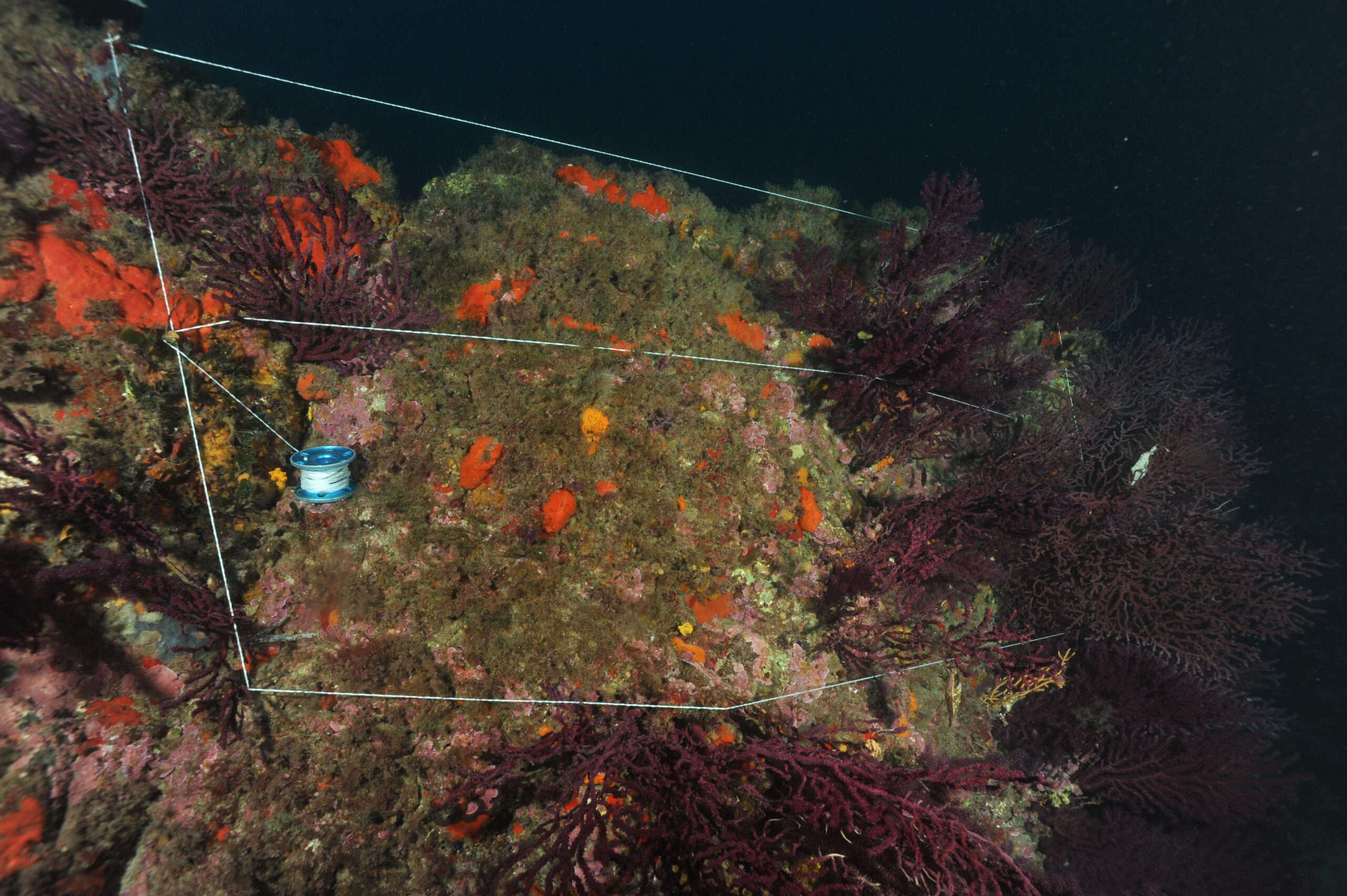 Permanent transect for regular monitoring of a population
Permanent transect for regular monitoring of a population
of red gorgonians (P. clavata) and associated fixed species.
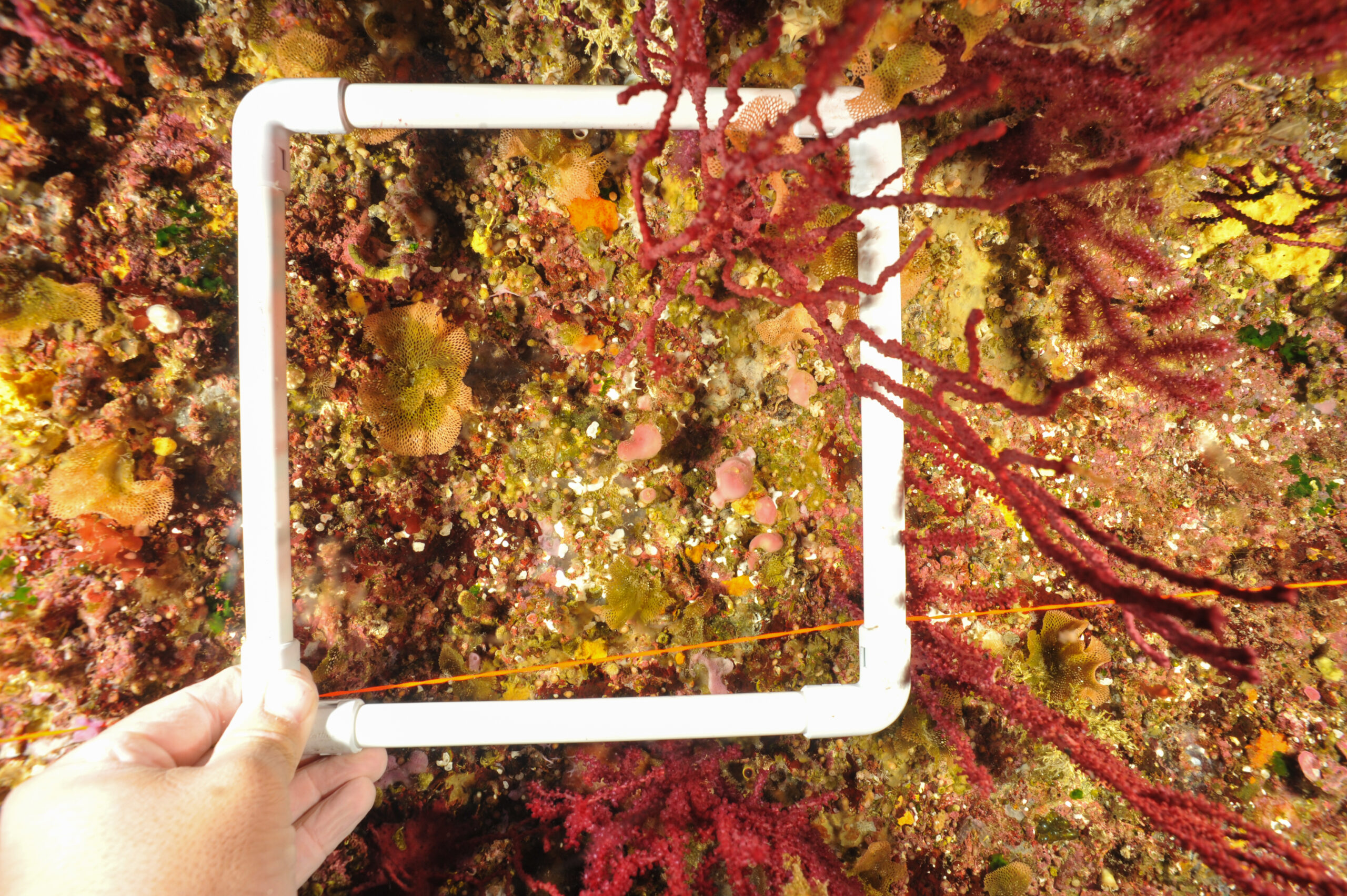 Photoquadrat for monitoring populations of fixed organisms associated with gorgonians.
Photoquadrat for monitoring populations of fixed organisms associated with gorgonians.
2. Populations health monitoring
The health of gorgonian populations is monitored at the end of the summer in the Parc national des Calanques along the depth gradient. This monitoring consists of recording recent and old necrosis in populations along the bathymetric gradient, and enables us to detect any mortality episodes. In the case of mass mortality event (MME), we intensify monitoring in order to record the extent of the event more accurately.
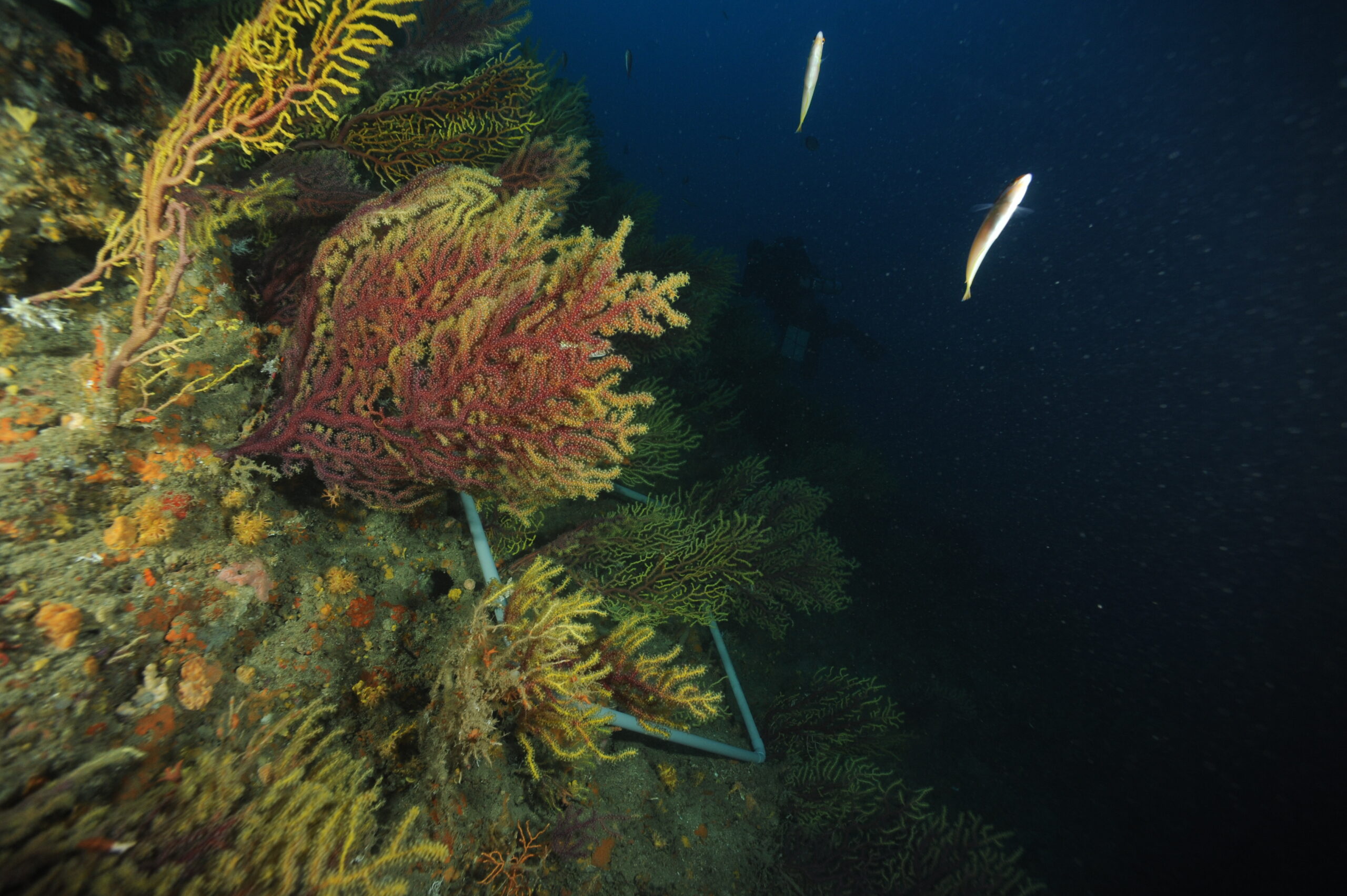 Monitoring the health of a population of red gorgonians (Paramuricea clavata).
Monitoring the health of a population of red gorgonians (Paramuricea clavata).
3. Mass Mortality Events (MMEs)
During mass mortality events (MME), we are mobilized to assess the impact on gorgonian populations and associated communities. This was the case in 2022, for example, which was marked by a historic mass mortality event. To assess the impact of this event, we carried out monitoring dives at 26 sites in the Calanques National Park and dozens of sites in the Parc Marin de la Côte Bleue, the Port-Cros National Park and the Scandola Nature Reserve.
Data submitted by managers of various Marine Protected Areas and by partner research teams are compiled with our data to offer a broader analysis on the scale of the French Mediterranean coastline.
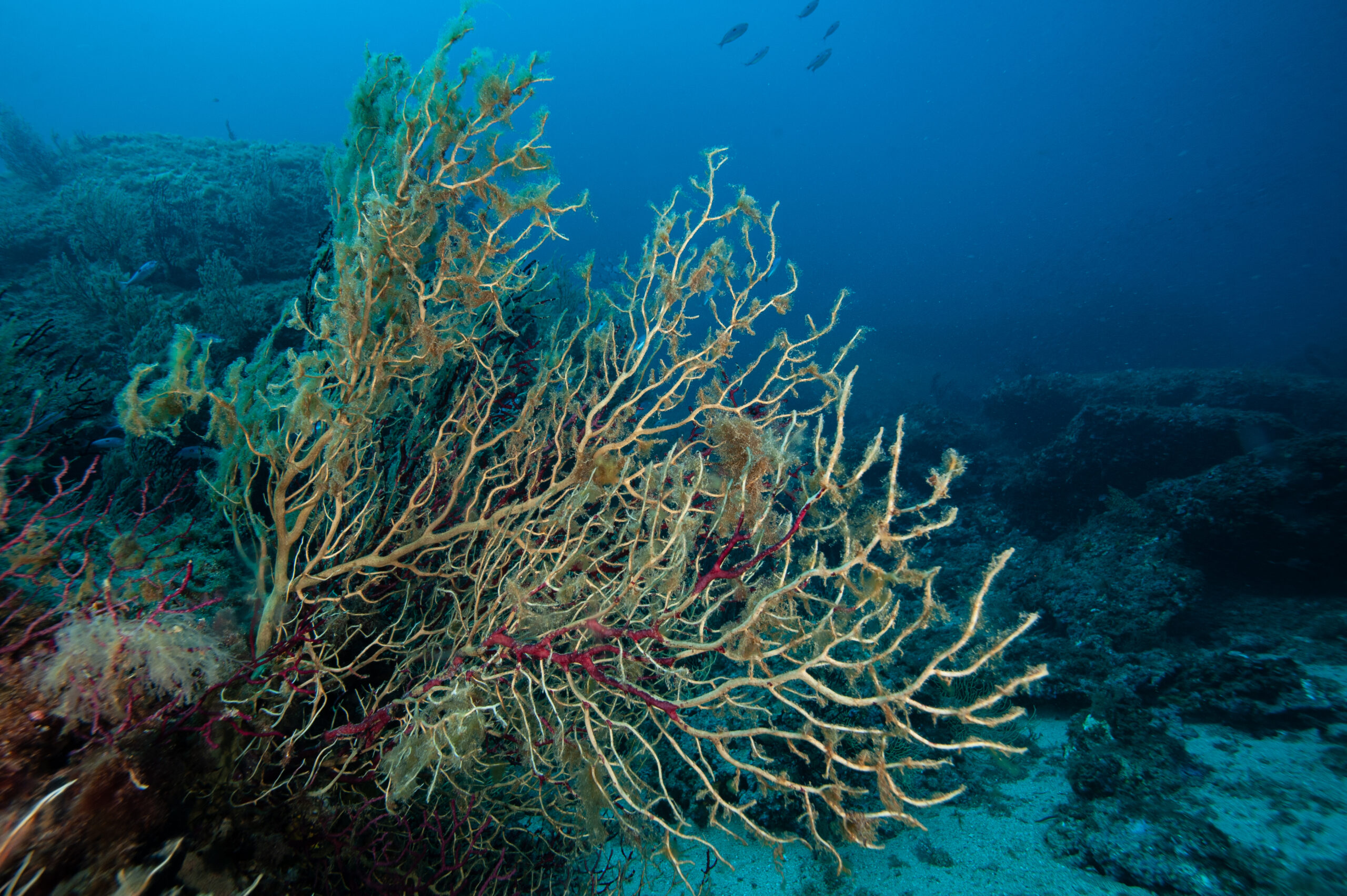 A red gorgonian (Paramurice clavata) colony that has suffered a mass mortality event.
A red gorgonian (Paramurice clavata) colony that has suffered a mass mortality event.
The colony has necrosed and the skeleton is exposed.
2022 : a historical Mass Mortality Event (MME) for gorgonians populations
Global warming is having a major impact on marine ecosystems, especially in the Mediterranean, which is not only a biodiversity hotspot, but also a focal point for climate change. In 2022, the entire Mediterranean basin was hit by a record-breaking marine heat wave, which persisted almost uninterrupted from August to October 2022. This heat wave resulted in above-average temperatures at the surface water level (0 to 30 m), which persisted throughout the period. It had a dramatic impact on the coralligenous, an endemic Mediterranean biocenosis that includes sponges and anthozoans such as the red coral (Corallium rubrum), the red gorgonian (Paramuricea clavata), the white gorgonian (Eunicella singularis) and the yellow gorgonian (Eunicella cavolini).
Within the Parc national des Calanques, 69% of red gorgonian (P. clavata) colonies were affected by this mass mortality episode between the surface and 40 m depth.
Scientific publication on the subject: https://onlinelibrary.wiley.com/doi/10.1111/gcb.16931
